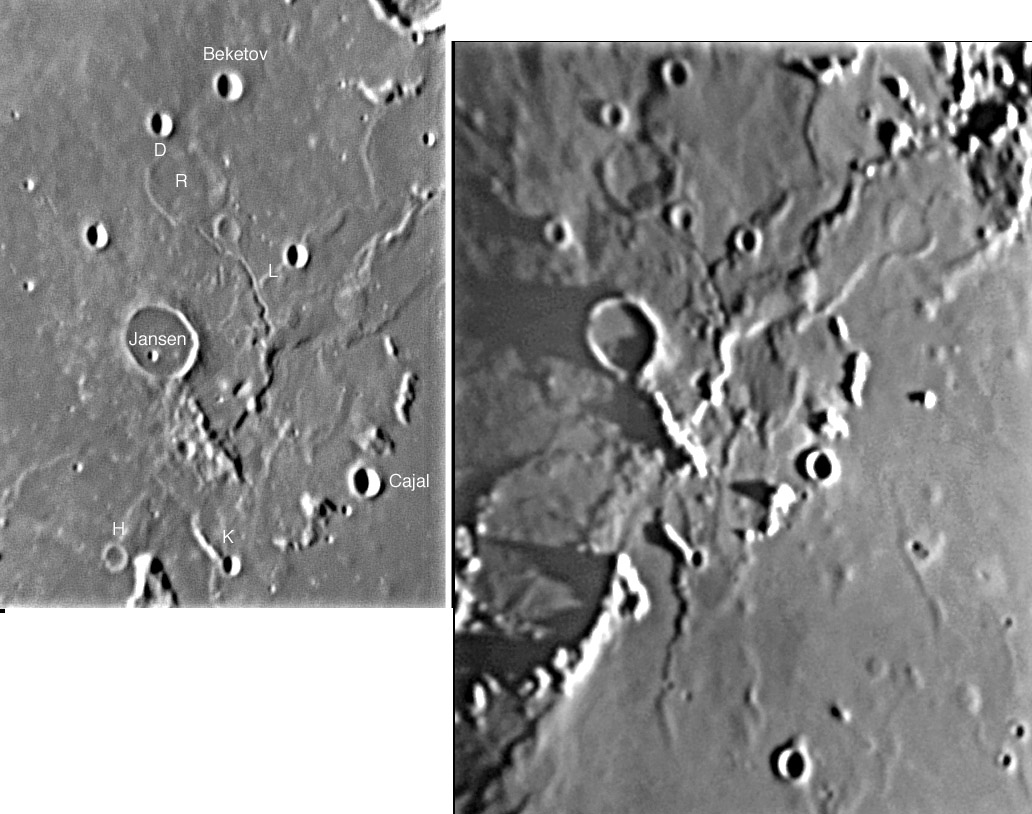
images by K.C. Pau, Hong Kong
KC is fascinated by Jansen, the skating-rink like crater in northern Tranquillitatis. Three years ago he imaged it and the surrounding younger and older maria with associated rille, ghost craters and domes. Here it is again in two images taken nearly two weeks apart. Since these images are instructive for demonstrating the importance of observing with opposite illumination directions and angles, I have greatly over-enhanced them to exaggerate the differences; forgive me, KC! The shadow cast by Jansen’s western rim by the grazing illumination (the right image) proves the existence of the notch in the rim. Also notice that Jansen is the center of a crcular zone of rougher terrain that Clementine shows to be redder and older lava - and it must be higher too. The low lighting also shows that Jansen R has raised rims, suggesting that it is a buried impact crater. There is an odd domical ramp on the southern part of R’s floor, and two other low mounds to the ramp’s north. Two possible domes - with central pits? - lie just west of R, and many other moundy rises again raise the question of when should a low swell or hill be called a dome rather than an accident of topography? The right image also shows the difference in the nature of the maria on either side of a diagonal from bottom left to upper right, with a deviation out to Cajal. To the right are smooth lavas and domes associated with the western end of the Cauchy area. And to the left is the rougher and older terrain of the Gardner MegaDome Alignment.
Technical Details:
Right: 25 Dec, 2006, and left: 7 Jan, 2007. 10″ f/6 Newtonian + 5X barlow + Philips Toucam Pro.
Related Links:
Rükl Plate 36
Yesterday's LPOD: A Missed Centenary
Tomorrow's LPOD: French Knotting the Moon
COMMENTS?
Register, Log in, and join in the comments.



